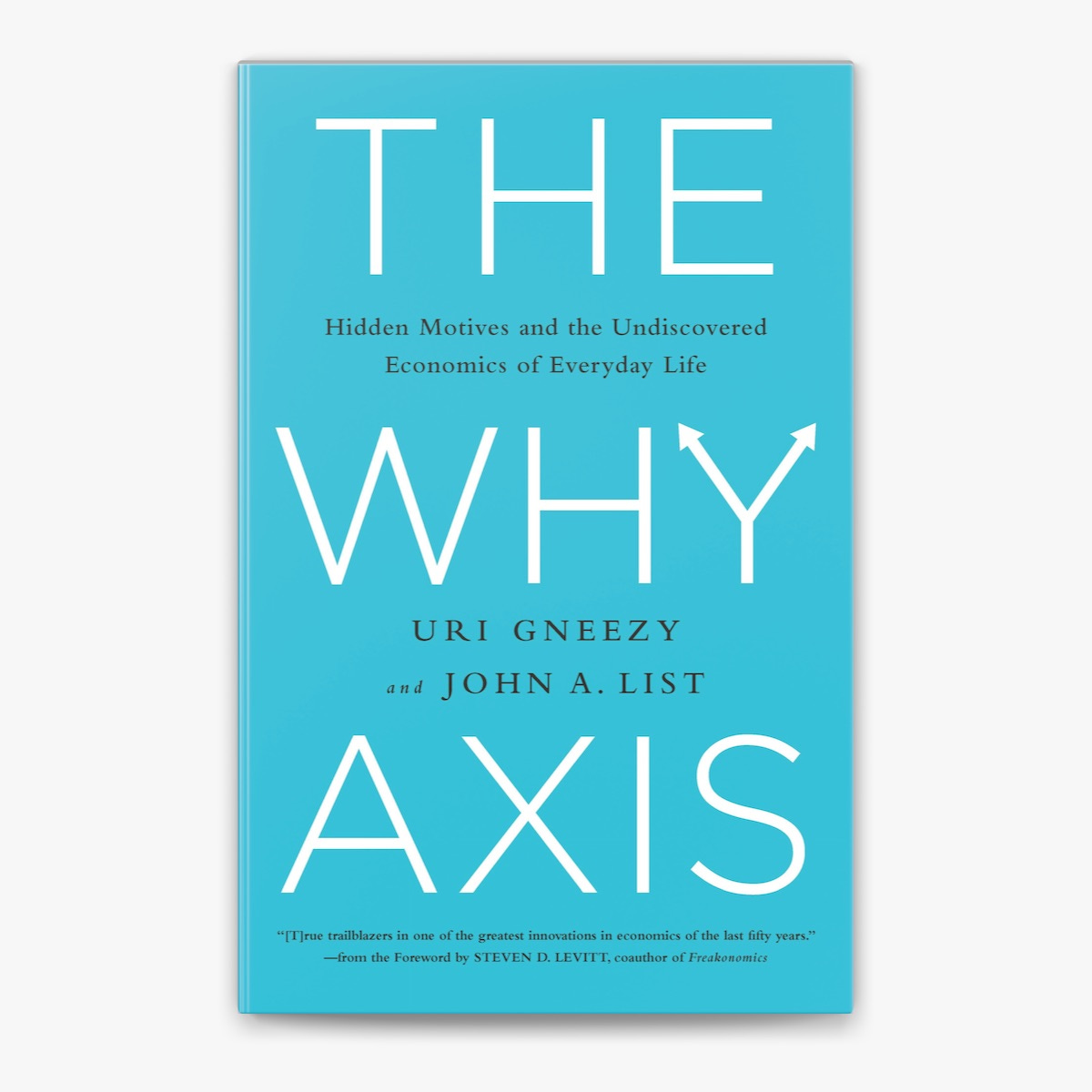Hidden Motives: the economics behind our choices
How incentives shape decisions, discrimination, and behavior
The Why Axis: Hidden Motives and the Undiscovered Economics of Everyday Life
By Uri Gneezy, John List, and Steven D. Levitt
The Why Axis takes readers behind the curtain of human behavior, explaining the hidden economics that influence everything from our daily decisions to our larger life choices. Gneezy and List—pioneers in behavioral economics—explore how humans are often swayed by factors they don’t even realize, such as social pressure, expectations, and hidden incentives.
Through compelling field experiments and real-life examples, they make complex economic principles accessible and engaging. The book not only explains the “what” and the “how” of everyday decisions but also dives deep into the “why”—offering insights that can be applied across multiple disciplines, from business to policy-making.
The big takeaway
By far the most mind-blowing part of the book was chapter 9:
“What Seven Words Can End Modern Discrimination? I don't really hate you, I just like money more."
The chapter covered some truly ground-breaking research by economist Gary Becker, who uncovered several hidden gems while conducting research on price discrimination.
He argued that in competitive markets, businesses driven by profit incentives—not personal biases—naturally move away from discrimination. Firms that exclude customers or workers based on race, gender, or other factors reduce their own potential profits, giving non-discriminatory competitors an advantage. Over time, market forces push out businesses that prioritize bias over economic rationality.
For example, when a car dealer charges a Black person more for a car or an auto repair costs disabled customers 30% more, the discrimination is not the result of racism or disability discrimination, he says. It results from business owners realizing that members of both groups are often less willing to seek a competitive bid from other vendors.
“This type of discrimination is not based on animus; It is based on economic incentives. To combat it, the person who is the target for unfair treatment needs to signal that he or she is like those people who are not being discriminated against.”
These seven words help prevent such price discrimination, he says:
“I am getting three price quotes today.”
Five takeaways
Behavior is shaped by incentives: Hidden incentives often play a larger role in decision-making than pure logic.
The power of social pressure: People are heavily influenced by the expectations of others, whether in the workplace or personal relationships.
Price discrimination can be fair: When rooted in market realities or social goals, differential pricing can promote fairness and inclusion.
Experiments reveal the truth: The authors use field experiments to show how small changes in context can dramatically alter behavior.
Rationality is a spectrum: Decisions that seem irrational often make sense within the individual’s context and incentives.
Ending thought
The Why Axis is an eye-opening book that uses real-world experiments to reveal the hidden forces shaping human behavior. If you want to understand the deeper reasons behind our choices and see how these forces play out in real life, this book is a must-read.




